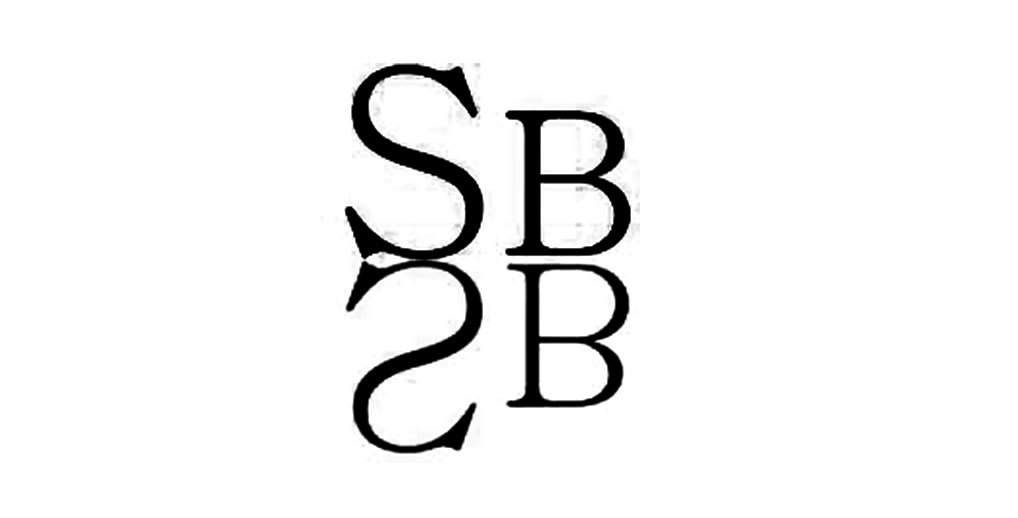The synth wizard
in you
Famous for Pink Floyd’s “On the Run,” the EMS Synthi and its forerunner the VCS3 are the synths you don’t realize you’ve heard everywhere.
Roxy Music, LCD Soundsystem, The Who, Tangerine Dream, Kraftwerk, King Crimson, and Brian Eno, were just a few of the artists who took it on sonic journeys. Where will Synthi V take you?
A Singular Sound
Neither quite like a Mini nor quite like an ARP, the Synthi has a raw, aggressive quality that jumps out of the speakers. So will your music.
Bigger on the Inside
Like a certain blue telephone box, Synthi V packs incredible technology into a deceptively small package and will transport you through time and space.
Modeled to the Last Transistor
Our renowned True Analog Emulation® modeling doesn’t merely mimic the sound. It reproduces exactly how and why the original’s components made that sound.
Jack of All Trades
Though the Synthi is known for special FX, Synthi V will add take-no-prisoners leads, basses, and atmospheres to any style of music you throw it at.
Every Band
Needed a Synthi
Electronic Music Studios’ VCS3 and Synxthi won the hearts and blew the minds of British musicians throughout the 1970s. Its inventors were beyond revolutionary.
Electronic Music Studios’ VCS3 and Synthi won the hearts and blew the minds of British musicians throughout the 1970s. Its inventors were beyond revolutionary.
Discover the history of Synthi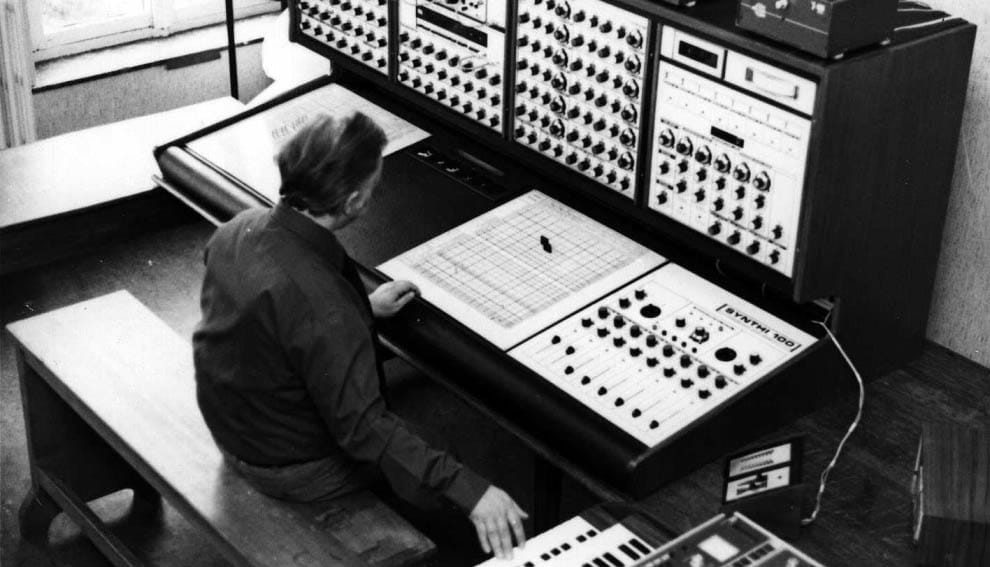
By the time EMS was founded in 1969, Zinovieff had collaborated with Delia Derbyshire of “Doctor Who” theme fame and was the only private citizen in the UK to own a computer, which sent control signals to his various sound sources. Cockerell had designed a bank of 64 wavetable oscillators. Both had experimented with A/D and D/A conversion. Point being, the EMS brain trust were easily 10 to 20 years ahead of their time.
Introduced in 1969, the analog VCS3 took aim at educators with cabinetry designed to make demos easy to see. It featured three VCOs, noise, a lowpass filter, ring modulator, envelope, joystick, stereo outputs, and built-in reverb. In place of patch cables was the now-famous “Battleship” pinboard, putting all the flexibility of a modular into an impossibly compact desktop synth. The layout of sources vertically and destinations horizontally is the origin of the modulation matrix we know today.
The VCS3 cost only £330, which put it within reach of schools and bands. In 1971, the Synthi A retained all the same circuits but cut the size to the familiar plastic briefcase. Importing a “mini” synth from the U.S. was several times more costly. For musicians in the UK and continental Europe, it was no contest.
Next, the Synthi AKS (1972) added the familiar blue touch-keyboard and a step sequencer in the briefcase’s lid. This is the version we have modeled in precise detail in Synthi V. Like the hardware that inspired it, it’s immediate, affordable, and for everyone.
Set the Controls
for the Heart of the Sound
Synthi V’s main interface captures all the charm of the original, with a handful of small tweaks that add up to a big difference.
If you’ve ever used a hardware EMS synth, you’ll feel right at home. If you’ve ever thought, “I wish my Synthi would do that,” ours does. If you’re new to the Synthi universe, you’ll forget you’re playing a virtual instrument.
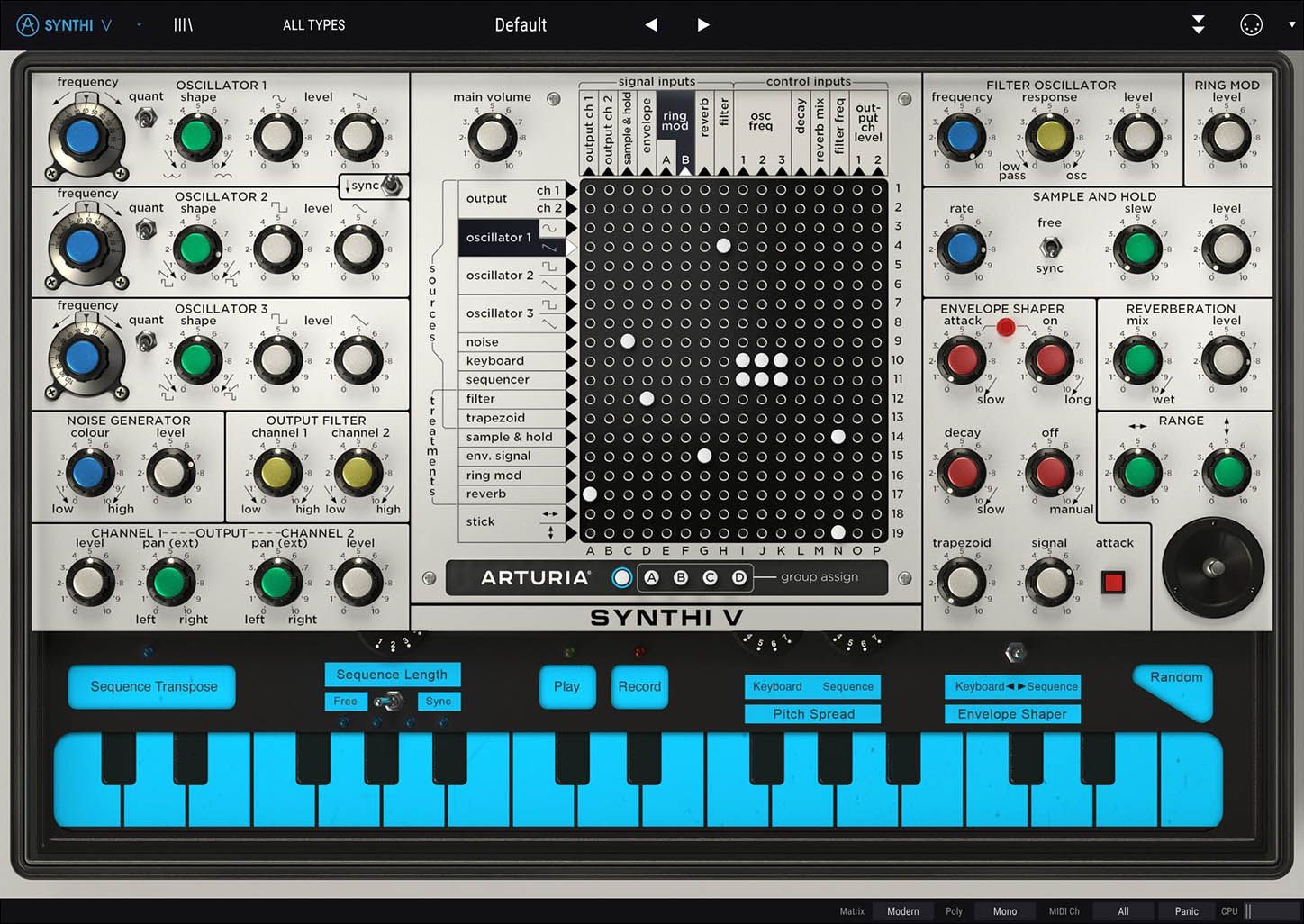
_1
_2
_3
_4
_5
_6
_7
01. Enhanced VCOs
Synthi V’s oscillators can quantize pitch to semitones and hard-sync VCO2 to VCO1. Or, control-drag on the knobs to make fine adjustments.
02. Put a Pin In It
Patch audio and control signals to destinations by clicking on the virtual pinboard. Sources and destinations are highlighted as you go.
03. Pintastic
Use a special group pin to route several signals to several places at once in the Advanced Panel.
04. Sample and Hold
We’ve added a sample-and-hold generator with its own row in the pin matrix, for cool non-linear modulation effects..
05. Synced On the Run
We’ve preserved the legacy sequencer in all its glory, only now it optionally syncs to MIDI or your host DAW’s project tempo.
06. Ready Player One
Assign each axis of the joystick to any destination you choose.
07. Attenuator Pins
The hardware used special pins if you wanted less of an audio or control signal to go somewhere. Click-hold on a pin to choose one.
Synthi
and Synthier
Synthi V’s Advanced Panel lets you write the history of the future.
Since the Synthi’s designers were early computer geeks, we thought about what software-powered features they might have added if they’d had the chance. Then we did it.
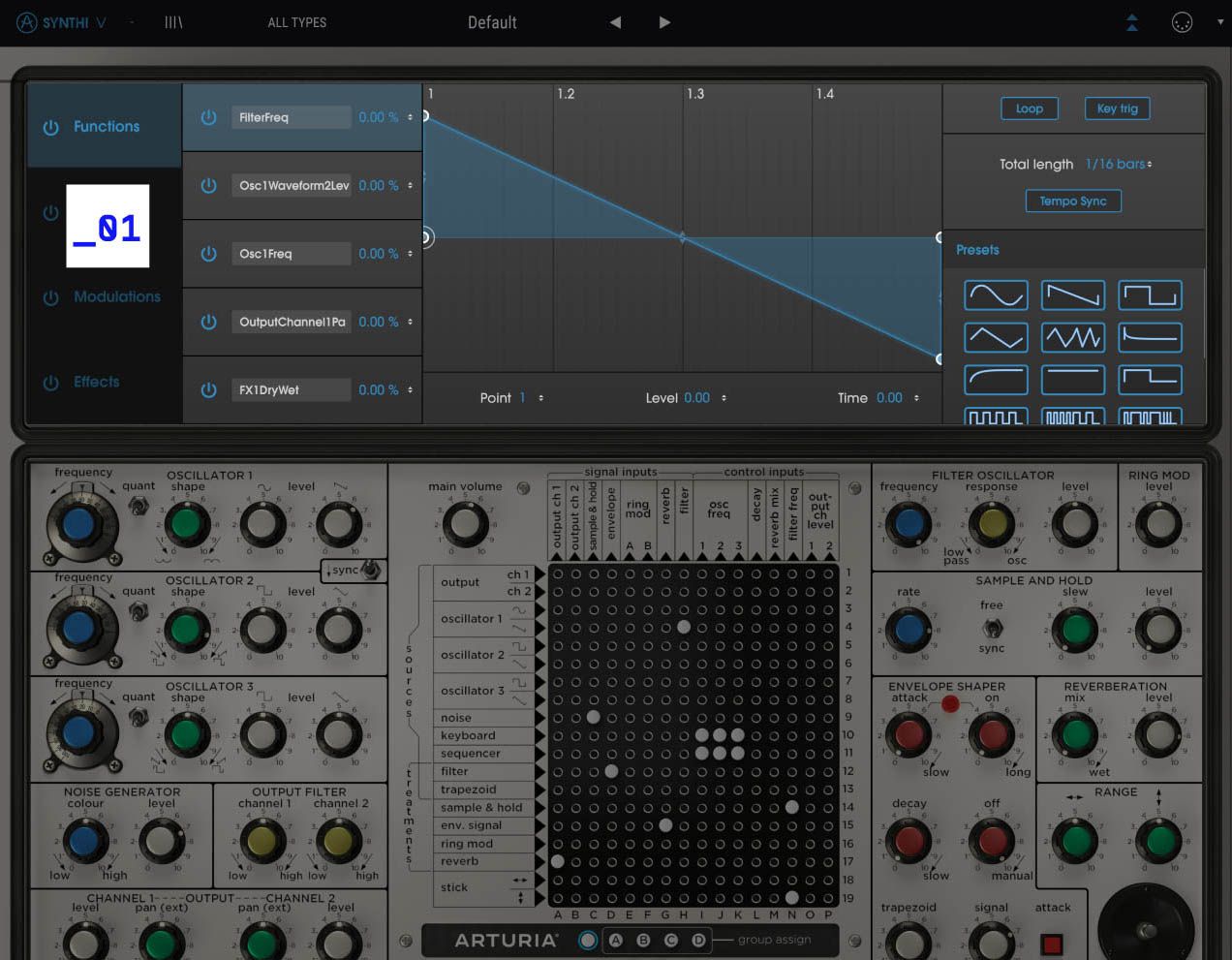
Functions can behave like an LFO, a complex multi-segment envelope, or anything in between. Route up to five of them to any parameter in Synthi V.
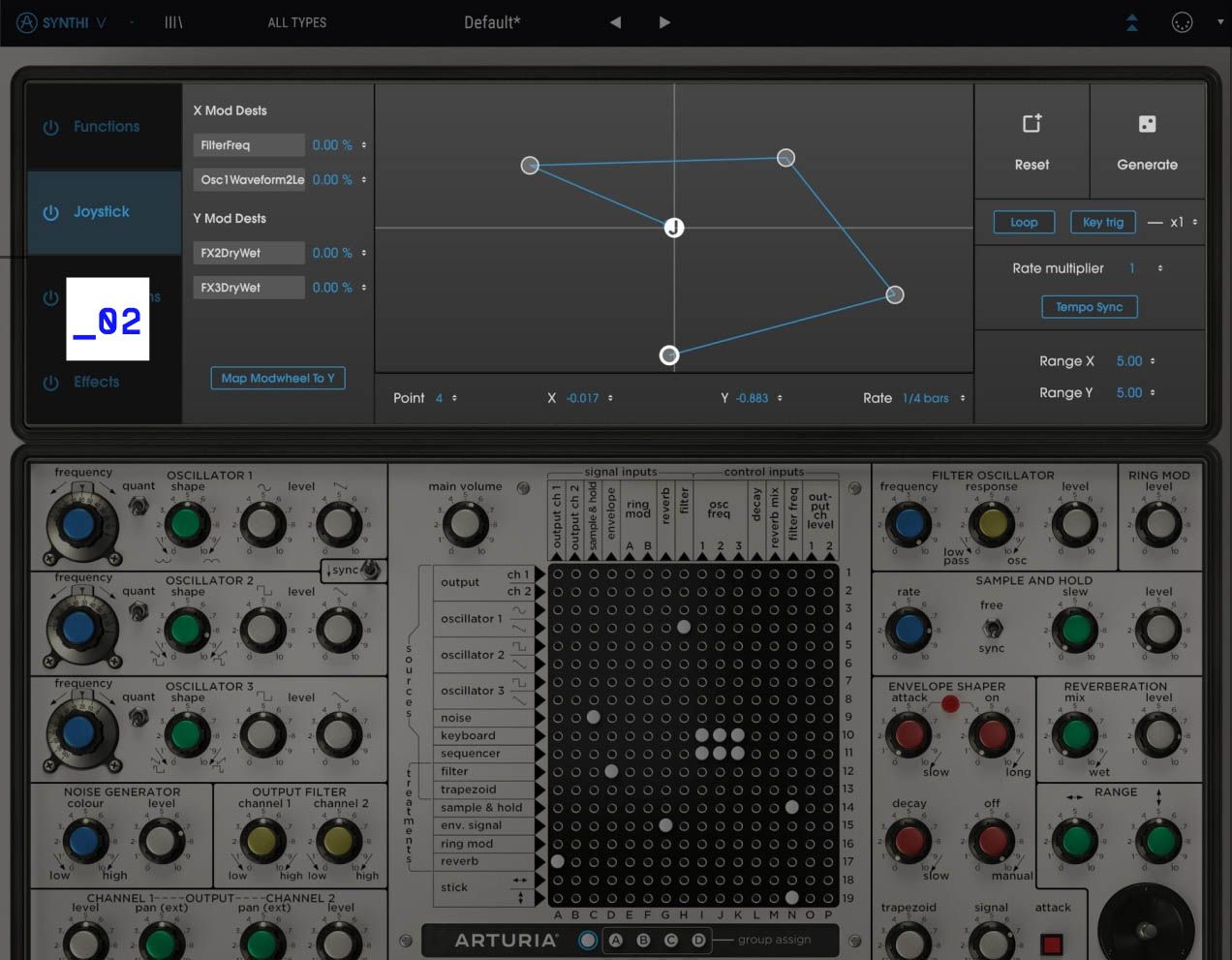
Create automatic, tempo-syncable joystick moves (or trigger them manually) and assign even more joystick routings here. It gets crazy deep, crazy fast.
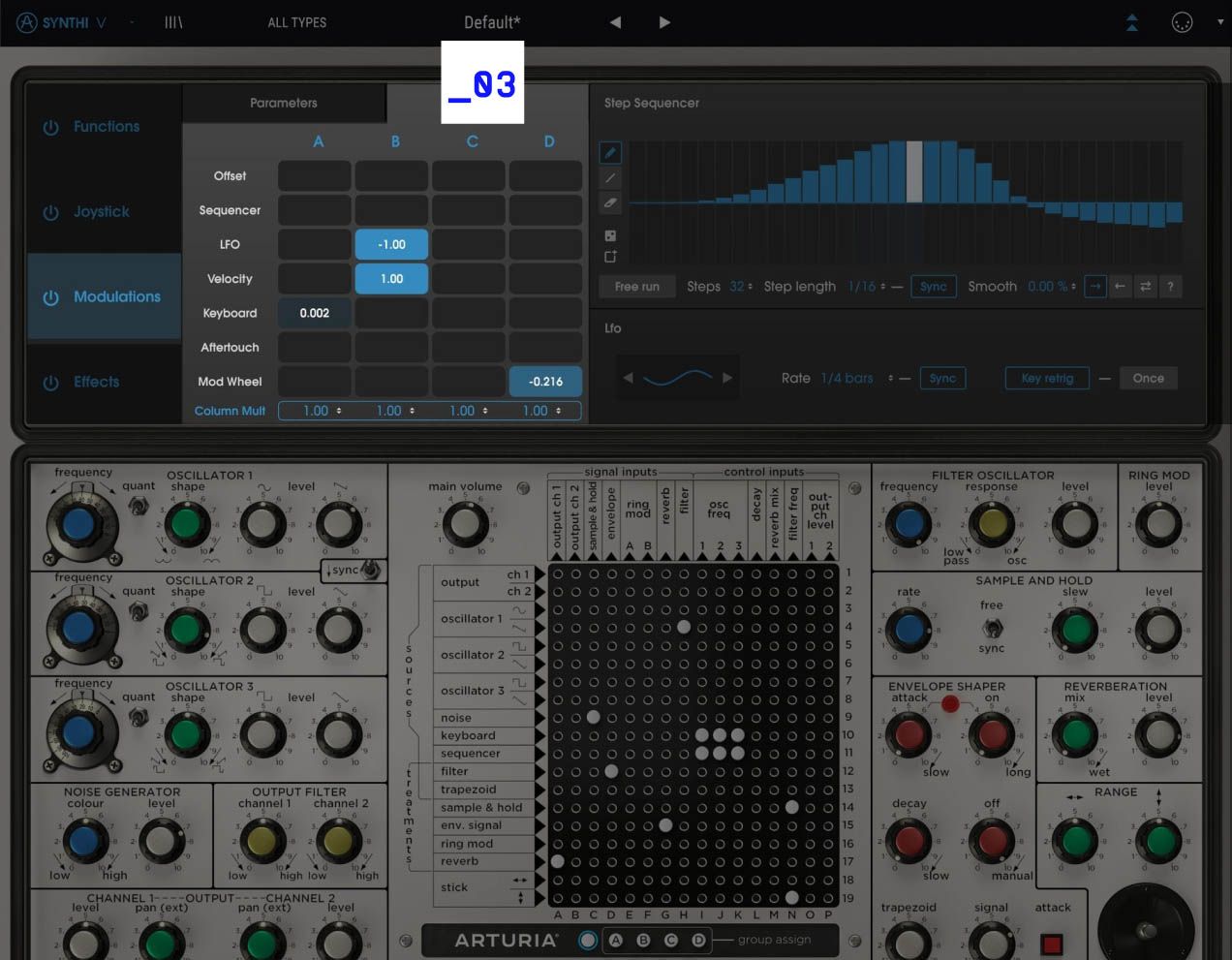
With modern control sources like velocity, aftertouch, and an extra LFO, the advanced modulation matrix picks up where the original left off.

Here is where you can assign modulation sources to figure into any group pins you have in play on the main panel.
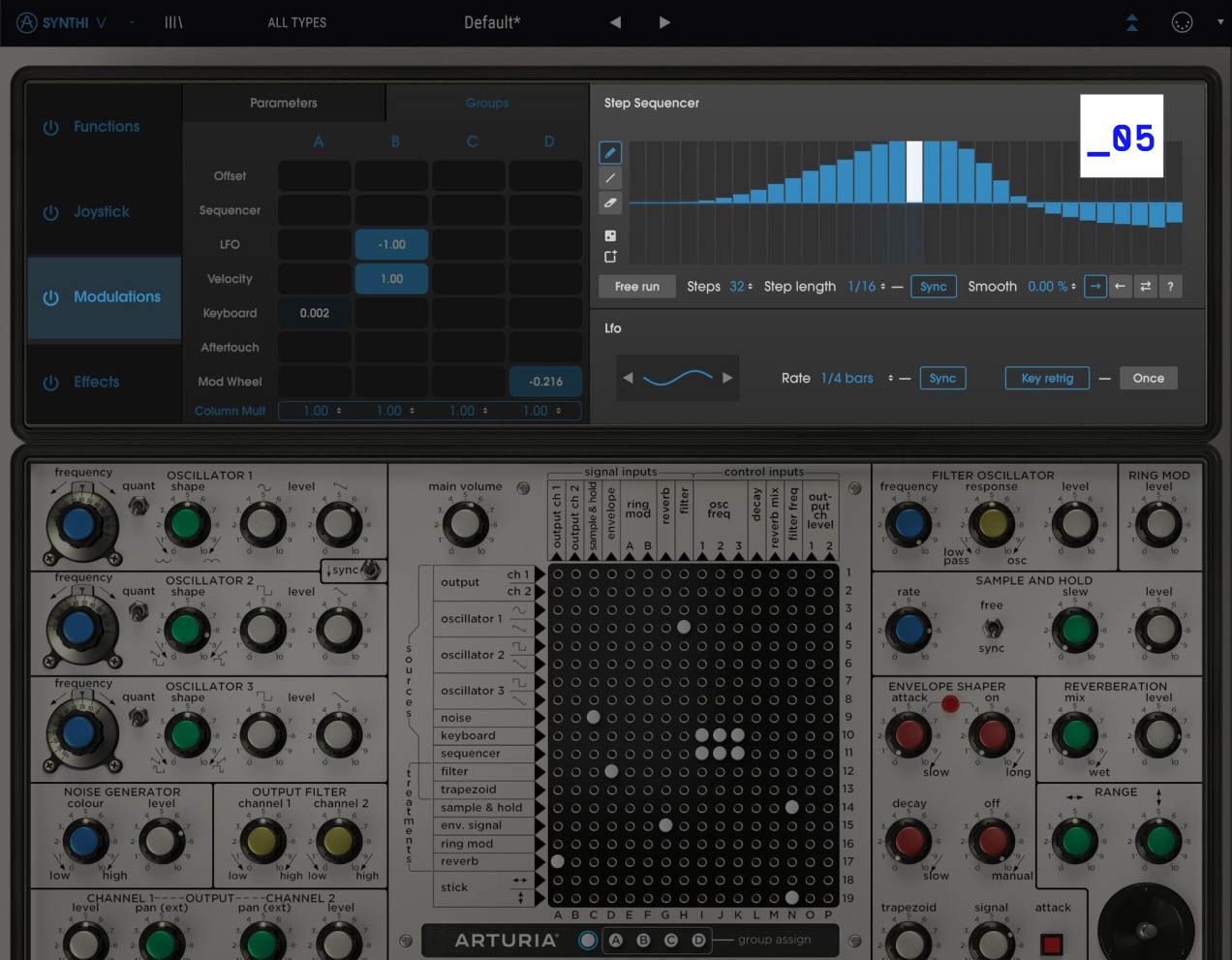
Create sequences of up to 32 steps and assign them to pitch or any other parameter in Synthi V.
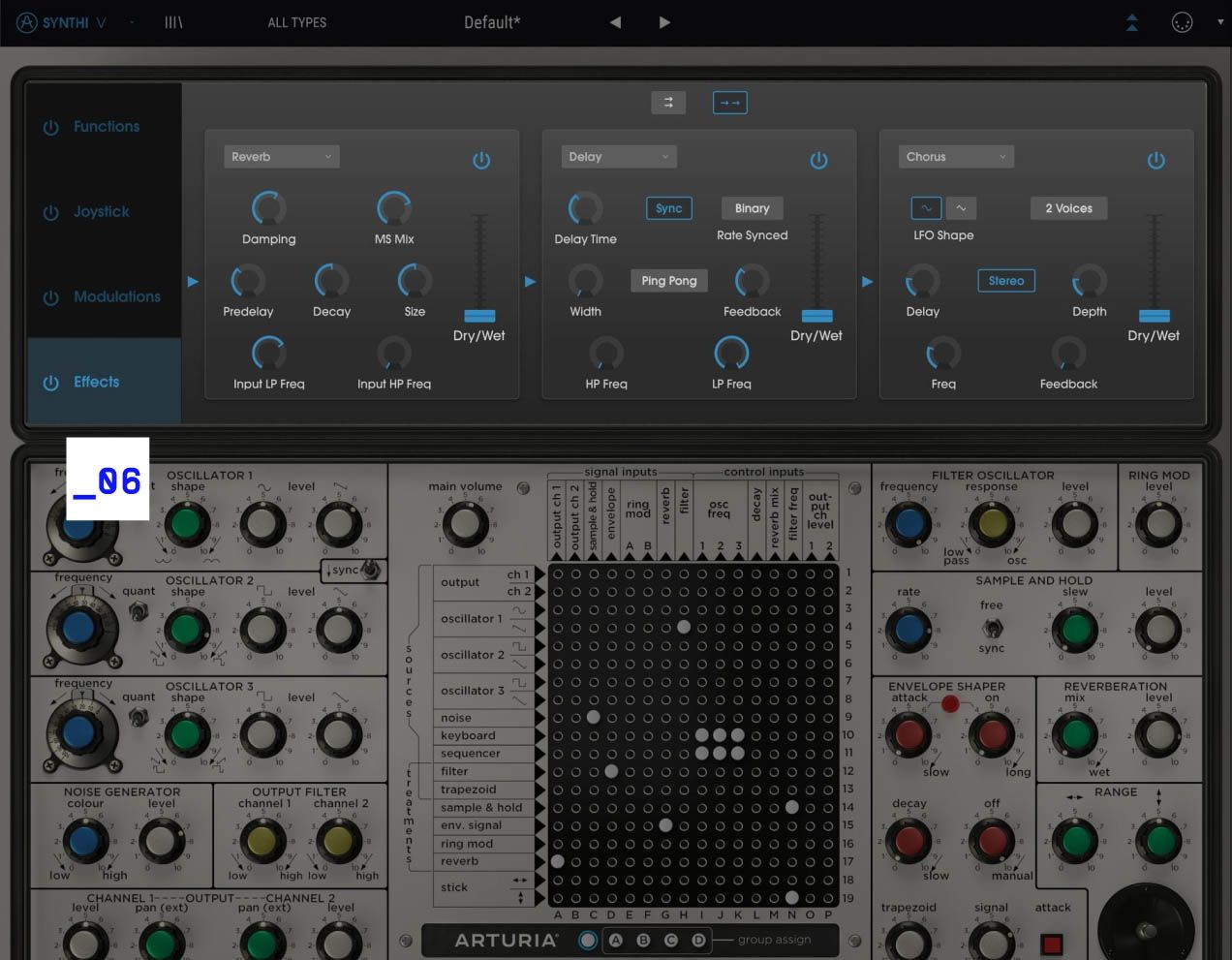
Route Synthi V’s final output through up to three effects at once, in series or parallel. Appropriate effects tempo-sync, including a stereo ping-pong delay.
Hear it
in action
Synthi V announces itself with bold sound and undeniably psychedelic energy. Here are the tracks it inspired some of our favorite electronic music artists to create.
Chill One
Matt Pike
Hawking Radiation
Simon Gallifet
Int
Blush Response
Jarre Meet_Floyd
Paul Schilling
Just Another_Day
Paul Schilling
Past
Maxime Dangles
Reach For
Ed Ten_Eyck
Spiral
Matt Pike
Artistscorner
PressClippings
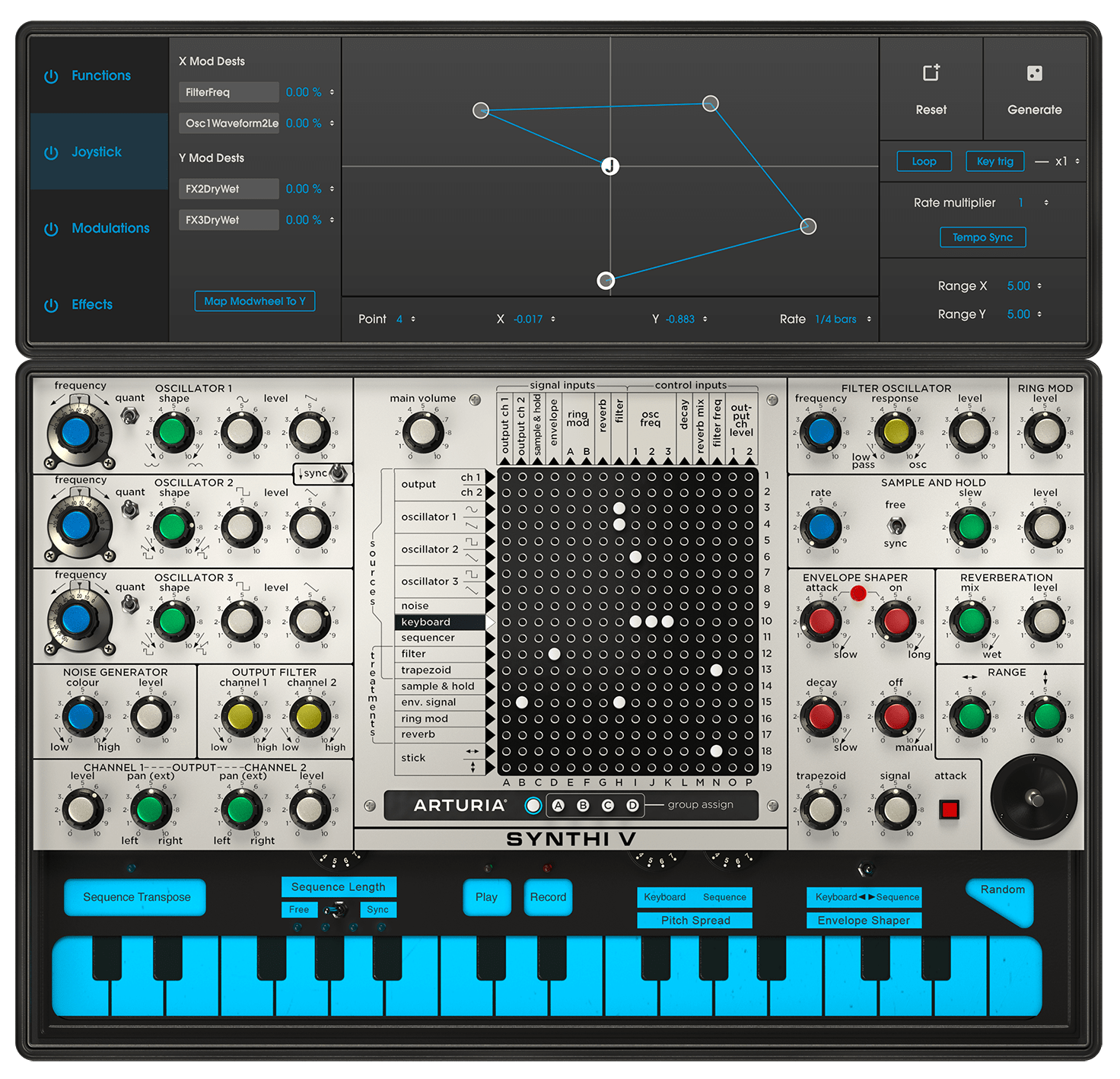
Included in
V collection
Legendary Keyboards Reinvented
This instrument is also part of the V Collection -your complete dream line-up of the legendary synths, organs, pianos and more that made keyboard history. They’re modeled with the most advanced technologies for authentic realism, and enhanced with new creative options. Whether you use it as DAW plugins in the studio or standalone at gigs, V Collection puts the greatest keys of all time at your fingertips for instant inspiration.
Learn More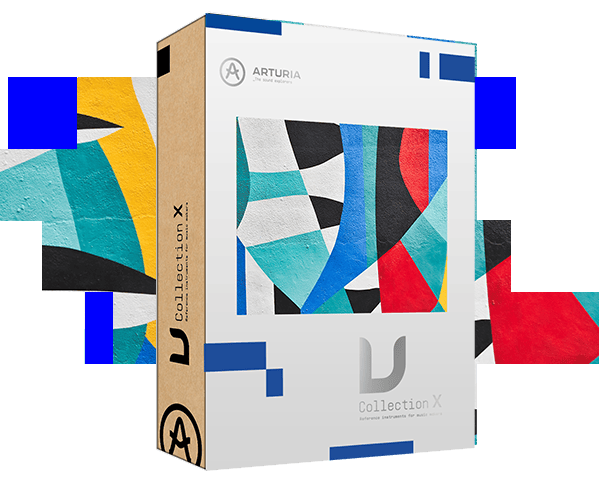
Die Features
Du brauchst

Integrierte In-App-Tutorials führen dich durch jeden Aspekt des Instruments, von individuellen Parametern bis hin zu Tipps unserer Sounddesigner, damit du dich auf deinen kreativen Moment konzentrieren kannst. Das kann doch nicht so einfach sein, ist es aber!

Mit dem Arturia Software Center kannst du deine Arturia Software an einem Ort herunterladen, organisieren und aktualisieren und alle deine Lizenzen für mehrere Geräte verwalten. Einfacher geht es nicht!

Unsere virtuellen Instrumente und Plug-Ins wurden so entwickelt, dass sie problemlos direkt in dein Setup passen. Unabhängig von deinem Style kannst du jeden Sound erkunden und gleichzeitig die volle Kompatibilität mit den wichtigsten DAWs sowohl unter Windows als auch unter macOS genießen.

Finde sofort den richtigen Sound mit dem intelligenten & optimierten Preset-Browser. Suche nach Schlüsselwörtern, nach Instrumentenart, Musikstil und nach vielem mehr - du kannst sogar deine Favoriten speichern, um diese später schnell aufzurufen.

Egal, ob du mit einer Vollbilddarstellung in unsere klassischen Instrumentenemulationen eintauchen oder kostbaren Bildschirmplatz sparen willst – die Bedienoberflächen für alle virtuellen Arturia-Instrumente können beliebig skaliert werden – ganz nach deinem Geschmack.

Unsere Instrumente sind für den nahtlosen Einsatz mit der Arturia KeyLab-Serie vorkonfiguriert - aber sie funktionieren natürlich auch mit anderen MIDI-Controllern. Und mit dabei: Makros für direkte Sound-Optimierung, einfache DAW-Integration und Standalone-Betrieb.
TAE® Powered
The exclusive analog modeling technology that makes our emulations indistinguishable from the originals.
By accurately mimicking the characteristics of analog oscillators, filters, and soft clipping, we can provide astonishing component-accurate detail and authentic analog charm in equal measure.
Learn more
Gallery
Main Features
A component-level model of the EMS Synthi AKS
3 oscillators with waveform mix, noise generator, 18 dB/oct resonant filter, output section with spring reverb modelling
Modular architecture, allowing to route signals in unexpected ways
Ring Modulator, loopable Envelope Shaper, 2 axis Joystick and Sample and Hold modules for advanced modulations
Original keyboard sequencer module with sync to DAW tempo
2 matrix behavior modes: modern and vintage for cross-talk simulation
5 assignable voltage functions to create multi-point envelopes and LFOs synced to DAW tempo
Advanced joystick automation module for modulating parameters in a 2D space
Matrix pin amounts modulations possibilities (with 4 independent groups)
10 effects, Reverb Phaser, Flanger, Chorus, Overdrive, Delay, ...
Up to 4 voices of polyphony
Over 250 factory presets
Platform specifications
Windows
- Win 10+ (64bit)
- 4 GB RAM
- Vierkern-CPU, 3.4 GHz (4.0 GHz Turbo-boost)
- 3GB freier Festplattenspeicher
- OpenGL 2.0 kompatible GPU
- ARM Prozessoren werden unter Windows nicht unterstützt
Systemvoraussetzungen
- Arbeitet als Standalone, VST, AAX, Audio Unit, NKS (nur mit 64-Bit DAWs).




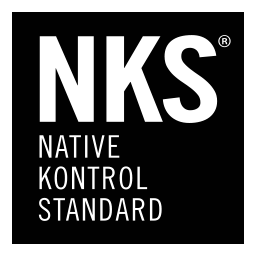
Apple
- Mac OS 11+
- 4 GB RAM
- Vierkern-CPU, 3.4 GHz (4.0 GHz Turbo-boost) oder M1 CPU
- 3GB freier Festplattenspeicher
- OpenGL 2.0 kompatible GPU
Arbeiten mit dem ASC
- Eine elegante und einfache Lösung, die dir bei der Installation, Aktivierung und Aktualisierung der Arturia-Softwareinstrumente hilft.
Alle auf dieser Seite genannten Hersteller- und Produktnamen sind Marken der jeweiligen Eigentümer und stehen in keiner Weise mit Arturia in Verbindung. Die Markenbezeichnungen anderer Hersteller dienen ausschließlich der Kennzeichnung der Produkte derjenigen Hersteller, deren Eigenschaften und Klang bei der Entwicklung analysiert wurden. Alle Namen von Geräten, Entwicklern und Herstellern werden nur zur Veranschaulichung und zu Bildungszwecken aufgeführt und stellen keine Verbindung oder Billigung durch einen Geräte-Entwickler oder -Hersteller dar.

